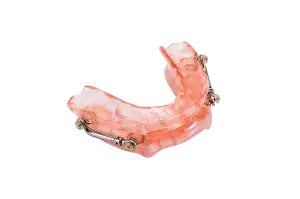Grease Stain Removal: Master the Art of Banishing Grease from Clothes at Home

- Preparing the Stained Garment
- Absorbing Excess Grease
- Applying Dish Soap or Liquid Detergent
- Gently Rubbing the Stain
- Soaking the Garment
- Laundering the Stained Clothing
- Checking for Residual Stains
- Treating Stubborn Stains with Stain Remover
- Drying and Inspecting the Garment
- Final Thoughts: Preventing Future Grease Stains
Grease stains can be a nightmare to deal with. Whether it's from cooking, eating, or accidental spills, these stubborn marks have a way of finding their way onto our clothes. But fear not! With the right techniques and a little know-how, you can master the art of banishing grease stains from your favorite garments right in the comfort of your own home. In this article, we will guide you through step-by-step instructions on how to effectively remove grease stains and restore your clothes to their former glory. Say goodbye to those unsightly grease spots and hello to fresh, clean clothing!
Preparing the Stained Garment
Before attempting to remove a grease stain from clothing, it's important to properly prepare the garment. Start by checking the care label for any specific instructions or restrictions. If the fabric is delicate or requires special care, consider taking it to a professional cleaner.
Next, gently scrape off any excess grease with a spoon or dull knife. Be careful not to spread the stain further into the fabric. Once most of the excess grease has been removed, place a clean white cloth or paper towel underneath the stained area to prevent any potential transfer of grease onto other parts of the garment.
By taking these initial steps, you'll be better equipped to tackle the grease stain and increase your chances of successful removal.
Absorbing Excess Grease
Before treating a grease stain on clothing, it's important to absorb as much of the excess grease as possible. Start by blotting the stain gently with a clean cloth or paper towel. Avoid rubbing the stain, as this can spread the grease and make it more difficult to remove. If the stain is fresh, you can also sprinkle some cornstarch or talcum powder onto the affected area. Leave it on for a few minutes to absorb the grease, then brush off the powder. This step will help minimize the size and severity of the stain before moving on to further treatment methods.
Applying Dish Soap or Liquid Detergent
After absorbing excess grease from the stained garment, it's time to move on to the next step: applying dish soap or liquid detergent. These products are effective in breaking down and removing grease stains. Start by applying a small amount of dish soap or liquid detergent directly onto the stain. Gently rub the soap into the fabric, focusing on the stained area. Allow it to sit for a few minutes to allow the soap to penetrate the grease. This will help loosen the stain and make it easier to remove during laundering. Remember not to scrub too vigorously, as this may damage delicate fabrics.
Gently Rubbing the Stain
After absorbing the excess grease from the stained garment, it's time to move on to the next step: gently rubbing the stain. This step is crucial in breaking down and loosening up the grease particles embedded in the fabric fibers.
Using a clean cloth or sponge, apply a small amount of dish soap or liquid detergent directly onto the stain. Make sure to choose a product that is specifically designed for removing grease stains.
With gentle circular motions, start rubbing the soap into the stain. Be careful not to scrub too vigorously as this may damage delicate fabrics or spread the stain further. Instead, focus on applying light pressure and working the soap into the fabric.
Continue rubbing for a few minutes, allowing the soap to penetrate and lift off as much of the grease as possible. You may notice that the stain starts to fade or break apart during this process.
Once you have thoroughly rubbed in the soap, let it sit on the stain for about 10-15 minutes. This will give it some time to work its magic and further loosen any remaining grease.
Remember, patience is key when dealing with grease stains. Rushing through this step may result in an incomplete removal of the stain, so take your time and ensure that you have covered all areas affected by grease.
Now that we have successfully tackled gently rubbing the stain, it's time to move on to soaking the garment in our next step of banishing those stubborn grease stains.
Soaking the Garment
Soaking the Garment: Once you have applied dish soap or liquid detergent to the grease stain, it's time to soak the garment. Fill a basin or sink with warm water and add a small amount of laundry detergent. Place the stained clothing in the soapy water and let it soak for at least 30 minutes. This will help loosen any remaining grease and allow the detergent to penetrate deeper into the fabric fibers. Gently agitate the garment occasionally to aid in the removal process. After soaking, proceed to launder the clothing as usual.
Laundering the Stained Clothing
Once you have treated the grease stain, it's time to launder the garment. Check the care label for any specific washing instructions. If it is safe to machine wash, set your washing machine to the appropriate temperature and select a regular cycle.
Before adding other clothes, place the stained garment in the machine. Add a good quality laundry detergent according to the recommended amount for a normal load. This will help remove any remaining grease residue.
Allow the washing machine to complete its cycle, ensuring that it goes through both a wash and rinse cycle. Once finished, carefully inspect the garment for any signs of residual stains before drying.
Remember, if you notice any lingering grease stains, do not put the garment in the dryer as heat can set stains permanently. Instead, repeat the stain removal process or consider using a stain remover specifically designed for stubborn grease stains.
By following these steps and properly laundering your stained clothing, you can effectively banish grease stains and restore your garments back to their original condition.
Checking for Residual Stains
After laundering the stained clothing, it's important to check for any residual grease stains. Inspect the garment under good lighting to ensure that all traces of the stain have been removed. If you notice any remaining discoloration or greasy spots, repeat the stain removal process from step 2 onwards. It's crucial to address any lingering stains before drying the garment, as heat can set the grease and make it more difficult to remove later on. Take your time and be thorough in checking for any stubborn stains that may require additional treatment.
Treating Stubborn Stains with Stain Remover
Stubborn grease stains can be a challenge to remove, but with the right stain remover, you can conquer even the toughest marks. Look for a stain remover specifically designed for grease and oil stains. Apply a small amount directly to the stain and gently rub it in using a clean cloth or sponge. Allow the stain remover to penetrate the fabric for a few minutes before laundering as usual. Be sure to follow the instructions on the stain remover product for best results. Remember, patience is key when dealing with stubborn stains, so don't give up!
Drying and Inspecting the Garment
Once you have successfully removed the grease stain from your clothing, it is important to properly dry and inspect the garment before putting it away. Start by gently squeezing out any excess water from the fabric. Avoid wringing or twisting the garment, as this can cause damage.
Next, lay the garment flat on a clean towel or hang it up to air dry. Avoid using a dryer, as heat can set any remaining stains and make them more difficult to remove later on. Allow the garment to dry completely before moving on to the next step.
After drying, carefully inspect the garment for any residual stains. If you notice any lingering grease marks, repeat the stain removal process from earlier steps. It is crucial to address these stains promptly to prevent them from becoming permanent.
If there are no visible stains after drying, proceed with ironing or steaming if necessary. Follow the care instructions on the garment's label to ensure proper ironing temperature and technique. Ironing can help remove any remaining traces of grease and restore the fabric's original appearance.
Once you are satisfied with the results, store your freshly cleaned garment in a cool, dry place away from direct sunlight. This will help maintain its quality until you are ready to wear it again.
By following these steps and mastering the art of banishing grease stains at home, you can save your favorite clothes from being permanently marred by unsightly marks. Remember, prevention is key in avoiding future grease stains, so be mindful when cooking or working around oily substances.
Final Thoughts: Preventing Future Grease Stains
While knowing how to effectively remove grease stains is important, it's equally crucial to take steps to prevent them in the first place. Here are a few tips to help you keep your clothes grease-free:
1. Be mindful while cooking: Avoid splattering oil or grease onto your clothing by using splatter guards and lids when cooking with high heat.
2. Wear an apron: Invest in a good-quality apron that covers your clothes completely. This will act as a barrier between your garments and any potential grease or oil splatters.
3. Treat stains immediately: The longer you wait to address a grease stain, the harder it becomes to remove. As soon as you notice a stain, take action by following the steps outlined in this article.
4. Use stain-resistant products: Consider using fabric sprays or treatments that provide an extra layer of protection against stains, including grease.
5. Separate greasy items from other laundry: When doing laundry, separate heavily soiled or greasy items from the rest of your clothes. This will prevent any potential transfer of grease onto clean garments.
By implementing these preventive measures, you can minimize the chances of encountering stubborn grease stains on your favorite clothes and ensure they remain in pristine condition for longer periods of time. Remember, prevention is always better than cure!
Published: 23. 11. 2023
Category: Home



